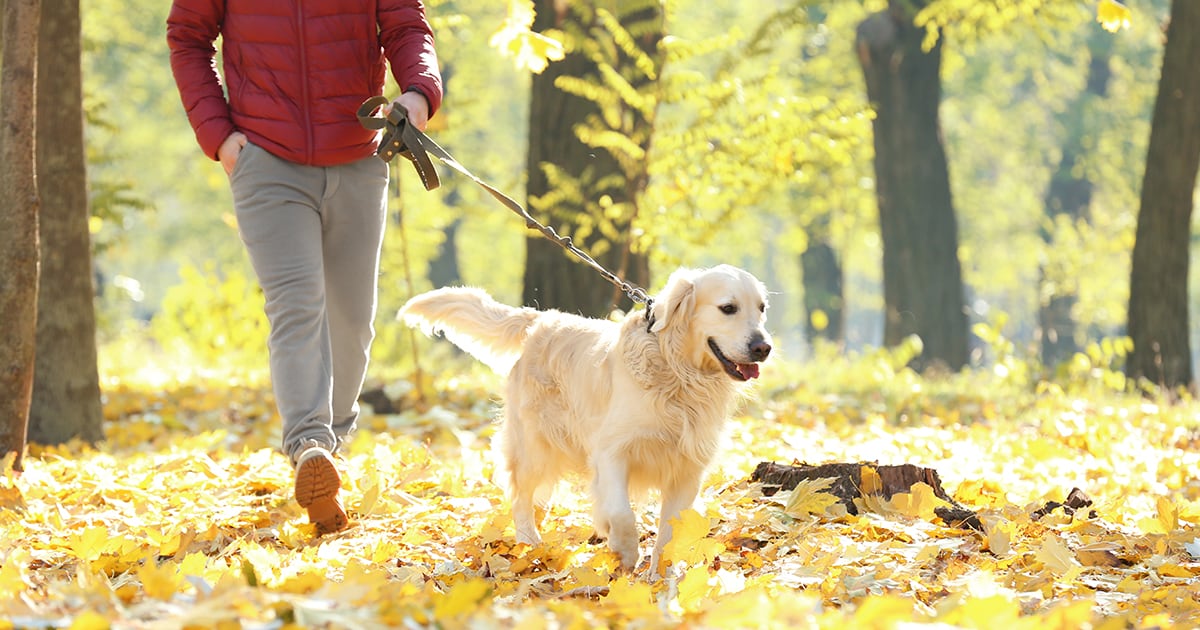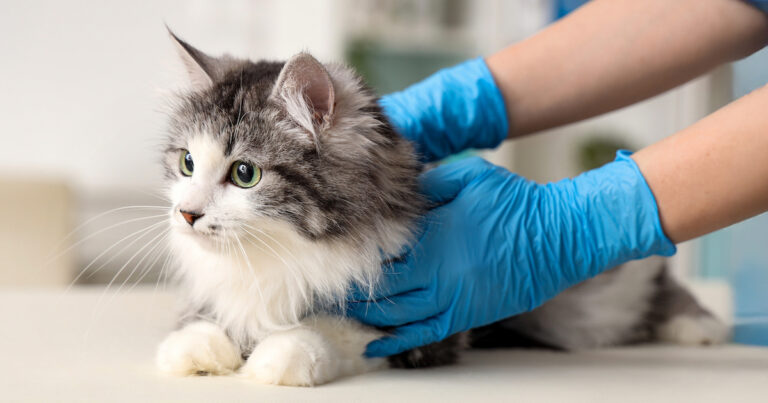This time of year, we’re all trying to squeeze in as much outdoor time as we can before the daylight disappears and the first snowflake twirls out of the sky. We’re biking, hiking and doing more outdoor chores while we still can. And we’re including our pets while we’re desperately sucking up that vitamin D.
But as the seasons change, so does the outdoor environment in which your dog or cat plays. Here are a few potential pet dangers that you should consider as the days grow colder and shorter.
Wandering wildlife
You’re not the only one battening down the hatches and being more active outside. The local wildlife is likely changing its behavior, too, which means that you or your dog might encounter animals that you normally wouldn’t. Some animals, like squirrels and mice, are out and about double-time, storing food for the winter, searching for new cozy homes or even migrating. This means that there may be rodent poison around buildings. Make sure your pet can’t get to it, whether you’re on a walk or around your own house. If you suspect that your pet has gotten into some rodent poison, call poison control immediately.
Deer mating season generally peaks in autumn, which can cause deer to travel to places (like backyards) they otherwise avoid in search of a mate. Bucks may be aggressive, so make sure your dog keeps his or her distance. If you hear a loud snorting while near some woods, it’s likely a deer sounding the alarm.
Raccoons are largely nocturnal, but since night falls earlier now, you might see them out and about in what used to be the daytime. They spend the fall looking for warm places to ride out the cold because they hibernate through much of the winter, so you might even see them near your house or garage. Never let your dog engage a raccoon. They might look cuddly and friendly, but they can be fierce fighters when cornered.
Snakes might be found on trails or rocks, soaking up the last vestiges of the warm sun before heading into hibernation. If you go to the woods for any reason, familiarize yourself with the types of snakes in the area. Most are harmless, but you’ll want to know if there are venomous danger noodles in the vicinity.
The best policy when you’re out and about with your pet is to make sure they’re on a leash or in a fenced-in, secure area. This is true all year round, but it is extra true in the fall. Be vigilant when hiking, because there are lots of new smells and sights your dog might want to investigate with no notice — with many dogs, a running animal is a chased animal.
Make sure your pet’s tags are up to date and consider microchipping them before hitting the trail. Same goes for their shots and vaccinations.
The buzz about bees and wasps
Bees and wasps can be more aggressive in the fall as they prepare their hives for winter. If you think your pet was stung, first try to determine if it was by a bee or wasp. Bees will leave a stinger that you need to scrape (not pull or squeeze) out of the skin. Pulling or squeezing can cause more venom to enter the bloodstream. Wasps don’t leave the stinger but can sting multiple times.
If you notice pain, swelling, redness and itching, you can apply cold compresses to the area to help reduce swelling. Talk to your veterinarian before giving your pet any medication, and keep an eye on them for the next 12–24 hours to make sure no other signs develop.
If your pet is showing signs of an allergic reaction to the sting or was stung more than a few times, contact your veterinarian immediately.
Mushrooms might be irresistible
Autumn is peak mushroom season in many regions, and they can spring up overnight in the right conditions. Some curious dogs can’t help but sniff out these new additions to the environment, but it’s best to avoid them all together. The vast majority of mushrooms and toadstools aren’t toxic whatsoever, but the few that are can be life-threatening if consumed.
If you suspect that your pet has eaten any wild fungus, contact your veterinarian immediately.
Poops on the path
More wildlife activity means more strange animal feces around the yard or on the trail. Your more curious dogs might try to eat these new surprises, which can lead to garbage gut or worse.
Make sure you’re anti-antifreeze
As the mercury takes a dive, more and more people make sure their vehicles’ engines are protected from the cold. This means that there might be puddles of antifreeze on the ground, either from spills or leaking radiator hoses. Antifreeze can be incredibly toxic if the active ingredient is ethylene glycol — less than three tablespoons can be lethal to a 20-pound dog.
If you suspect that your dog has consumed antifreeze, seek immediate veterinary care. We stress “immediately.” Do not wait. If your veterinarian’s office is closed, take your dog to the nearest emergency veterinary hospital.
Temperature
Autumn sometimes sneaks up on us, and while we’re still making the transition from tank-top-and-flip-flop weather, it can be easy to forget that our dogs might be feeling the chill even more than we are. Make sure they are geared up for the weather, whether that means cold temperatures, wet and muddy conditions, or even ice. Don’t take for granted that that fur coat is enough to keep them warm.
Hunting season
Autumn is peak hunting season in many parts of the country. If you walk, run or hike anywhere near a wooded area, make sure you and your dog are dressed in the appropriate safety gear. Larger dogs can easily be mistaken for deer, so get out those reflectives and fluorescents.
The tick-talk never ends
Though traditionally considered to be spring and summer pests, ticks are pretty much a year-round threat — even active all winter long in some places. It’s good practice to keep up your flea and tick prevention all year long. For more about fleas and ticks, check out our guide to facts and fiction.
Keeping your pet safe this fall might seem overwhelming. But by being aware of your surroundings and always keeping your cat or dog on a leash or in a protected area, you’ll get the most out of sweater weather. Together.
RELATED POST: It’s No Joke: Pets and Wildlife Don’t Mix







